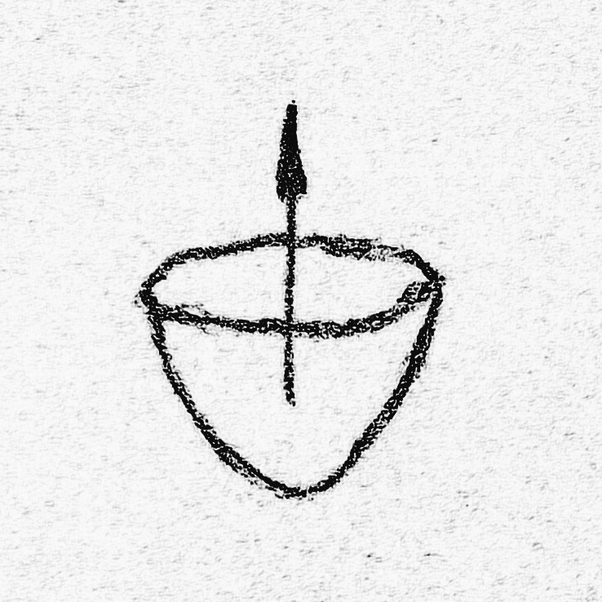 Michael Laitman, On Quora: “What are some Hanukkah symbols and meanings?“
Michael Laitman, On Quora: “What are some Hanukkah symbols and meanings?“
The Candle, the Oil and the Wick
It is known that the candles cannot burn until three conditions are met 1) the candle, which is the vessel in which the oil is placed; 2) the oil; 3) the wick (a woven cord (in a candle or oil lamp) that draws fuel up into the flame). When those three are brought together we can enjoy their light. – Rav Baruch Shalom HaLevi Ashlag (Rabash), Assorted Notes. Article No. 5, “The Meaning of Sins Becoming as Merits”
What is the spiritual significance of the candle, which was traditionally a cup or vessel that would contain the oil and the wick, and which forms a complete construction with the oil and the wick in order to create light?
The spiritual significance can be understood when we perceive this construction through the language of branches, where corporeal objects point to their spiritual phenomena and processes.
As such, this construction—candle, oil and wick—represents three discernments of a corrected spiritual vessel, i.e., a desire to receive pleasure that has been corrected with an intention to bestow. The light that emerges from this construction is the outcome of the spiritual vessel: the intention to bestow above the desire to receive.
The candle, the oil and the wick are all equally required in creating the spiritual vessel. That is, the oil in and of itself cannot light up, and the wick in and of itself also cannot light up. But the wick that absorbs the oil, which rises up the wick, can light up.
The spiritual significance of this candle-oil-wick construction is that these are three qualities positioned in opposition to each other: reception, bestowal, and the connection between them. We cannot light any of the qualities in and of themselves, but when one quality absorbs the other, i.e., the wick that absorbs the oil, then it can be lit.
Spiritually, the wick represents our egoistic reasoning that rejects the spiritual work of connecting positively with others.
Oil is the spiritual quality of bestowal (called “Ohr Hochma” [“Light of Wisdom”] in the wisdom of Kabbalah), which we cannot use or light in and of itself.
However, when we absorb the oil (quality of bestowal) in our wick (desire to receive), then we can light it, i.e., establish a connection between this world of reception and the spiritual world of bestowal.
In Hebrew, the word for “’Petillah’ (wick) [comes] from the word ‘Petaltol’ (winding) and from the word ‘Pesulah’ (flawed), since it is flawed to think such thoughts” (Rabash, “The Meaning of Sins Becoming as Merits“). In other words, our egoistic thoughts for self-benefit alone—considered “flawed” since they detach us from the sensation of eternal spiritual fulfillment—assume the form of a wick when we insert them into an environment that primarily values spiritual qualities of bestowal and positive connection, represented by the oil.
Then, by opposing the flaws in our egoistic nature by participating in an environment that primarily values bestowal and positive connection, we create a construction—a spiritual vessel—capable of becoming lit with the spiritual light.
Our positive connection to each other above our incomplete and flawed egoistic nature generates a miraculous flame—it sets the conditions by which the spiritual light of bestowal can become revealed, even if only slightly, upon our egoistic nature.
In the wisdom of Kabbalah, this action is called “the revelation of the Creator.” Our efforts to positively connect, with an intention to bestow above our flawed egoistic reasoning—which rejects making any movement without seeing personal benefit in return—becomes the candle (the spiritual vessel) that ultimately becomes lit by the Creator, i.e., in which we discover the Creator—the quality of pure bestowal.
The more we participate in an environment that prioritizes love, giving and positive connection above egoistic pursuits, the more we absorb the oil in the wick, even though the form of the wick is a flawed one, i.e., even though by nature we can only calculate egoistically, each for our personal benefit.
So we engage in a spiritual environment because we want to discover the secrets of the universe, to reach the ultimate level of knowledge and awareness of reality, and to feel nothing less than the eternal harmony of our soul. In other words, our ego drives us to a spiritual search with its own visions of what spiritual goodness is, which can only be an egoistic picture in the beginning of our journey.
But if we truly find ourselves in a spiritual environment—among people, books and teachers that value positive connection, love, bestowal, care, support and encouragement for one another—then our ego finds itself in a dilemma: it wants to receive spirituality for itself while the environment presents a constant example that spirituality is only in bestowal upon others.
The more we advance in our connection despite the ego’s complaints, then the more our wick absorbs the oil, and this process continues until we have absorbed enough oil within us, meeting all the conditions necessary for the flame to appear: the revelation of the Creator in the created beings, a new spiritual state that is called “Hanukkah,” the first pit stop on our spiritual journey to more and more harmonious states of love, bestowal and positive connection.
Based on the Daily Kabbalah Lesson of December 15, 2020. Watch the lesson here »


No comments:
Post a Comment